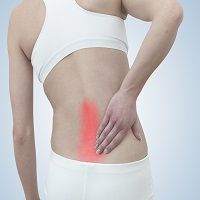Back Pain? Similar Results Shown with Surgery Versus Physical Therapy
While many individuals with lumbar spinal stenosis (LSS) opt for the high-tech approach of surgery to rid their symptoms, research shows that physical therapy has a similar improved outcome.

While many individuals with lumbar spinal stenosis (LSS) opt for the high-tech approach of surgery to rid their symptoms, research shows that physical therapy has a similar improved outcome.
Between 2000 and 2005 Lead Author Anthony Delitto, PhD, PT, FAPTA, and colleagues recruited 169 LSS patients who had already consented to surgery. Each patient was at least 50-years-old, able to walk at least ¼ of a mile without difficulty, and had no underlying medical problems like cancer, dementia, severe vascular disease, or prior heart attack.
The team randomly assigned the participants to either have the surgery, 87 patients, or go through physical therapy, 82 patients, as an alternative. The physical therapy group had 2 rehabilitation sessions every week for 6 weeks.
"Surgery is a riskier procedure, with about a 15 percent complication rate, and half of those are life-threatening," Delitto said in a news release. "It isn't a life-risking procedure to do physical therapy."
Published in Annals of Internal Medicine, the researchers found that when they compared the progress of the two groups, each had the same amount of physical function improvement.
“The most common complications in the surgery group were delayed wound healing, infection, and repeated surgery,” the study reviewed. “In the PT group, the only complication reported was increased symptoms.”
Although the physical therapy group had less complications, both methods proved to provide relief of common symptoms such as lower back pain, leg numbness, and walking troubles. The authors noted that 57%, or 47, of the participants stopped the regimen in order to undergo surgery at some point during the 2 year follow-up. Regardless, since physical therapy shows the same improvements, there is no harm in trying that approach first.
While he was not involved in the study, James Weinstein, DO, MS, chief executive of Dartmouth-Hitchcock health system, advised that “surgery should be the last option.”
The team recognizes the usefulness with LSS surgery, however, the recovery process can be slow so nonsurgical approaches should be considered as well.